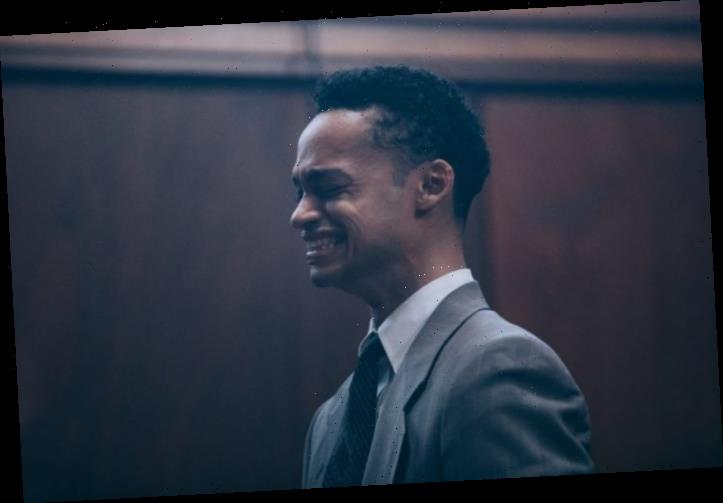For most of the “When They See Us” shoot, director Ava DuVernay worked with two or three cameras, but when it came to shooting the tense courtroom seen where Antron McCray, Kevin Richardson, Yusef Salaam, Raymond Santana and Korey Wise are put on trial, DuVernay shot with four cameras. Editor Spencer Averick says, “We needed reactions from the parents, the legal team, the kids and the judge because there’s a lot going on.”
Episode two in the four-part series picks up as the boys get ready for trial and the judge has ruled the admission tapes as admissible evidence. With the DNA evidence, inconclusive and the defendant having no recollection of the attack, the lawyers for the boys believe — with the boys being coerced into confessing — that the case is weak.
It’s decided the young boys are to have separate trials, and as we see from the episode, they’re are bewildered as to what’s going on. Averick’s goal with DuVernay was to get into their head and show everything unfold through their eyes.
In this Framing The Scene, Averick looks at how he edited the episode and later looks at editing the final episode where Korey Wise is in solitary confinement.
EPISODE TWO: The Trial
I’d never really shot a courtroom trial scene. We knew we didn’t want it to feel traditional. We were worried about it not feeling like an episode of “Law and Order” and so that was the goal.
I think it was achieved through the production, the shots and the cinematography. It was a long trial; we had to block over the key points in the trial and bring to life the points we wanted to tell.
We didn’t want it to feel like a day-to-day trial. We highlighted key moments and really tried to keep it within the mind-frame of these boys — what they saw and that the whole situation was surreal.
First of all, they didn’t do it. At some point, they thought we’re going to get out of it. We wanted to portray that idea of this happening fast, we don’t really get it, but we’re watching it happen, and it’s a nightmare. The boys are thinking, “Wow, these prosecutors are being really mean to us.” The idea was getting inside their heads and seeing it unfold through their eyes.
In the courtroom, Ava had four cameras because you don’t have a lot of time to shoot these things. We needed reactions from the parents, the legal team, the kids and the judge because there’s a lot going on. I can’t imagine being on set for that. She covered it, and I had a lot to work with and it was a puzzle putting it together. There was an array of shots. It was what about, “Who do I want to see?” and “What reaction shots do I want to see right now?” It was about building that through what was happening.
These kids can’t believe these people are speaking out against them, and the other people are trying so hard to send them to prison.
Through the edit, we wanted to give the suspense and a little bit of hope. That was achieved by letting the scene breathe.
When the verdict is read, it was written differently in the script. It was shot how it unfolded. The verdicts were really long. By the time we got there, it was clear we didn’t need to draw it out. The music came in before the verdict was read and it gives that away early on. We got right into the beautiful images and close-ups as the verdict was read.
Episode Four: Finding An Isolation Tone in Editing
When I first read the script for all four episodes, I remember calling Ava and I was so impressed. You go through the lives of these kids through episode 1-3, and by the time you get to episode three, they’re already out of prison.
We come back to Korey’s story and tell his story from the moment he heard his guilty verdict, it was so brilliant. I thought it was so well done. Jharrel Jerome was incredible. He became Korey. It’s not an actor working off another actor. For the most part, that’s just him working in solitary confinement. His body language and his performance were there.
It wasn’t a matter of finding it so much as finding the nuances that told the story of this little boy who went in and slowly became a man and slowly learned how to deal with surviving prison. It was about Korey learning to deal with the acceptance that everyone thought he was guilty. He probably went in and thought, “No, this is not happening. I’m not meant to be here.” He went in as a little boy, an innocent boy and evolved into someone who adapted to prison life. He became accepting of his situation.
In editing, it was really about isolating tones and staying within his head. It was a surreal nightmare that he’s going through, and that’s what I worked on getting across.
Source: Read Full Article
